Sunset Camera by Leo Lindroos
This installation by Leo Lindroos from Finnish architecture firm MOOK mimics the warm orange glow of a sunset to send viewers into a relaxed and sleepy state by boosting their melatonin levels.
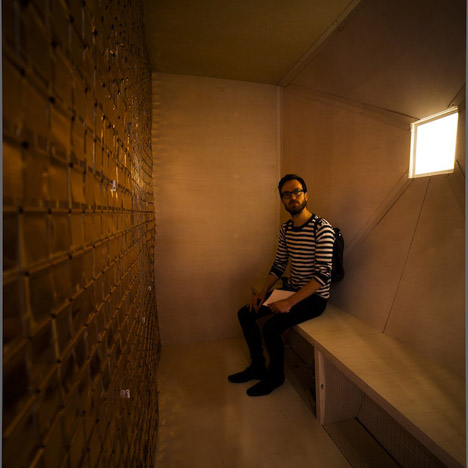
Sunset Camera was inspired by Lindroos' research into the effects of different types of light on the human body.
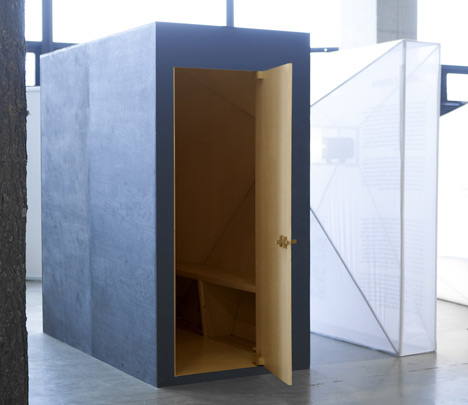
He found out that while bright light from computers and TV screens has an invigorating effect, light with a longer wavelength, such as the orange glow of a sunset, encourages the production of the hormone melatonin which relaxes the body for sleep.
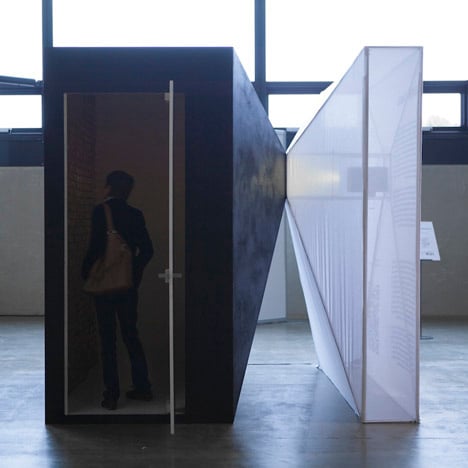
Visitors to the installation sit on a bench facing a wall of copper tiles. Behind them is a tank filled with soapy liquid that simulates the soft light of a sunset and converts a blueish beam of light into a soft orange light.
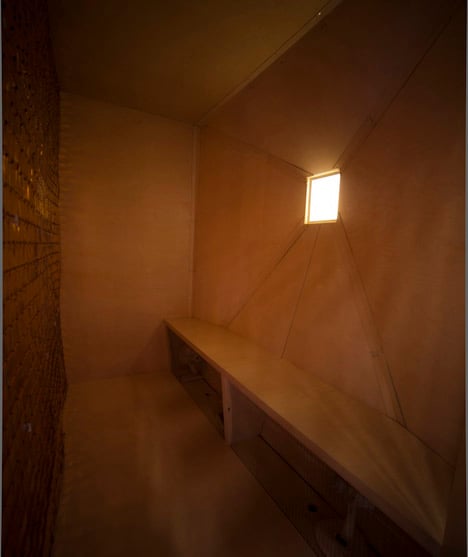
The orange light is projected onto the tiles to produce a warm glow in front of the viewer, while a gentle breeze from a fan under the bench moves the tiles and creates the atmosphere of a summer evening.
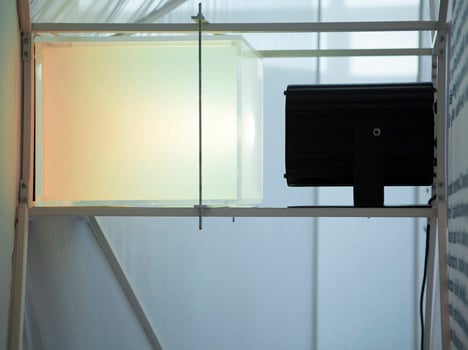
Sunset Camera was the winner of the annual Habitare Design Competition for architecture, art and design students. The brief for this year's competition was to design a private space for relaxation in a public space.
See all our stories about installations »
Photographs are by Miika Ullakko.
Here's some more information from the designer:
The Finnish annual high-profile Habitare Design Competition for architecture, art and design students was held for the 11th time 12-16th of September this year. The theme of the competition was to design a 'Private Space' for retreat, rest and relaxation for a public audience.
After the selection process of two stages, 64 entries and five finalists, the winner of the 2012 Habitare Design Competition was Leo Lindroos with his design Sunset Camera.
Head judge Boris Berlin said: "Leo Lindroos' design 'Sunset Camera' conceals light under two different structures. An incredible moving image of changing light brings the beauty of a sunset to urban people, creating a meditative state and sensation."
The purpose of the Sunset Camera is to bring attention to the two different effects that light has on human physiology. A bright light, often consumed by people in an artificial form (lamps, computers, TV screens and mobile phones) has an invigorative effect. Then there is a light with a longer wavelength, such as the orange coloured light from a sunset. That type of light increases our melatonin hormone production and calms us down, preparing us to go to sleep. Thus a bright light in the evening time confuses our biological clock and the melatonin hormone production process, what is shown by studies to be harmful for the human physiology.
The Sunset Camera works in three linear steps. First an artificial light beam is projected into a tank filled with a colloid liquid, which is basically soapy water. That liquid simulates the atmosphere in time of a sunset and morphs the blue-like light beam to a longer wavelength orange light. The now sunset like light shoots through the tank and into the room where a person is sitting on a bench. The light comes from behind and scatters on a kinetic wall full of tiny copper pixels that undulate in a calm way, when the smooth breeze of air coming from beneath the bench moves them like leaves of a tree on a warm summer evening.